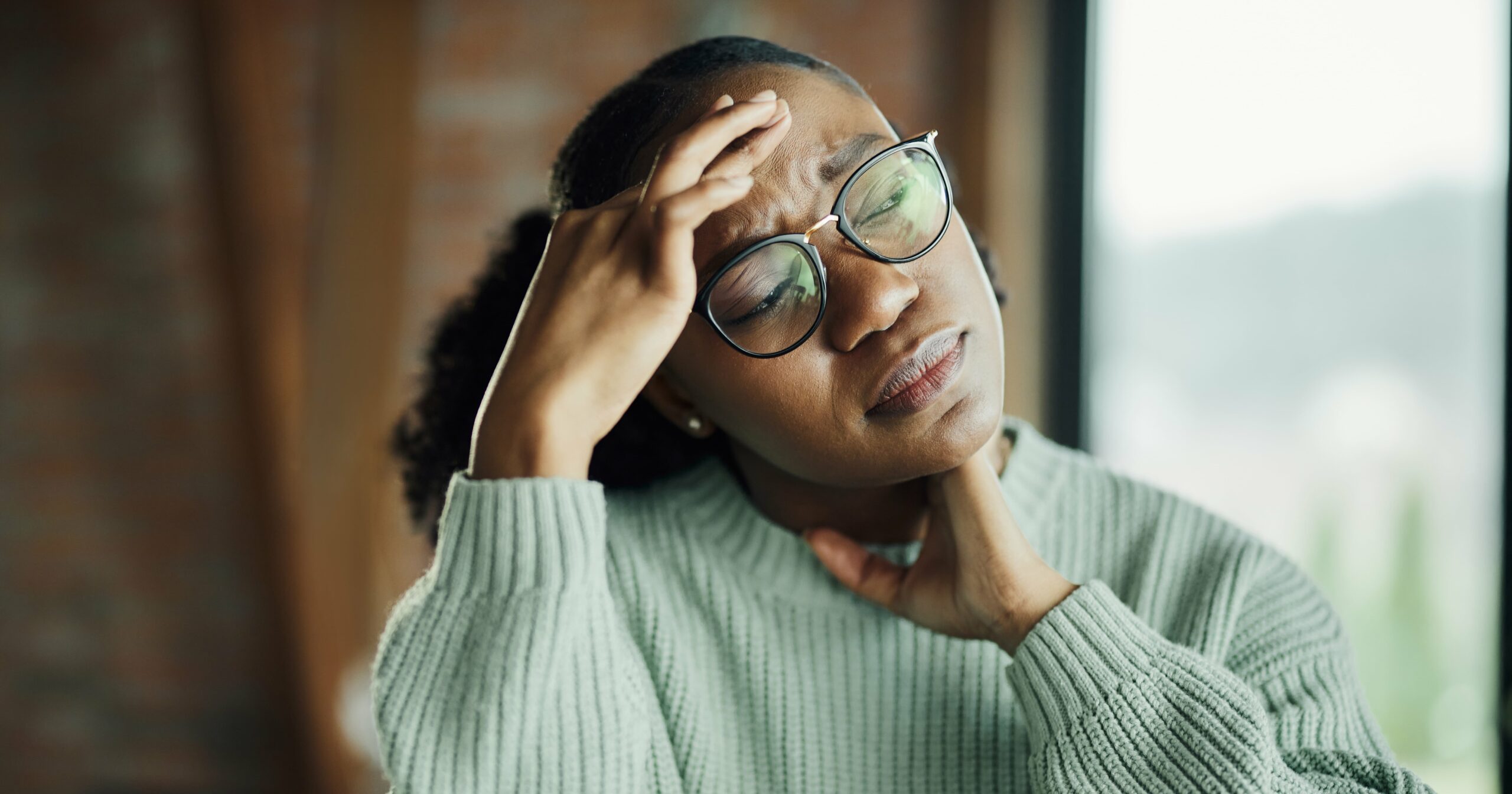Tension headaches are relatively common, but that doesn’t make them any less painful. The Cleveland Clinic reports that over 70% of people experience tension headaches from time to time, with some describing the mild-to-moderate pain as a tight band around the head, or mounting pressure near the temples. Thankfully, there are some strategies that can help relieve this discomfort. Chief among them are pressure points, which can be an especially powerful tool for that 70%.
According to Candace Morton, DPT, the pressure caused by tension headaches can wrap around your neck and all the way down your back. Pressure points help to relieve some of this tension. To learn more, we asked experts about the best pressure points for tension headaches. Read on to find some of the sweet spots for headache pain, and see how you can trigger them yourself at home.
Experts Featured in This Article:
Candace Morton, DPT, a physical therapist with ProRehab Physical Therapy in Louisville, KY.
Michele Renee, DC, M.Ac., is a chiropractor, acupuncturist, and director of integrative care at Northwestern Health Sciences University.
Tiffany Cruikshank, L.Ac., MAOM, is the founder of Yoga Medicine, with a background in acupuncture, Chinese medicine, sports medicine, and orthopedics.
What to Know About Tension Headaches
Although there isn’t one agreed-upon cause for tension headaches, there are some factors that may make symptoms worse. According to the Cleveland Clinic, these include:
- TMJ
- Neck strain
- Eye strain
- Sleep disorders (like insomnia or sleep apnea)
- Depression
- Anxiety
Beyond pain, you may also experience sore neck and shoulder muscles, as well as sensitivity to light and sound, per Harvard Medical School. Tension headaches can occur infrequently (once a month), frequently (1-14 a month for at least three months), or chronically (more than 15 a month for three months), depending on the frequency.
What Are Pressure Points, and Where Are They Located?
The term “pressure point” derives from acupressure, which is based on the traditional Chinese practice of acupuncture. “Pressure points are areas in the body that, when pressed, may help release tension or restriction,” says Michele Renee, DC, M.Ac. Tiffany Cruikshank, L.Ac., MAOM uses acupressure to treat patients with headaches and migraines, saying that pressure points are “an essential tool for breaking the headache cycle.”
Your muscle fibers typically aren’t tightened when they’re at rest. “Trigger points [or pressure points], however, are taut, contracted bands of muscle fibers,” Dr. Morton adds. This constant tension can contribute to headaches. Applying consistent pressure to trigger points can help relax these muscle fibers, release tension, and reduce pain, she says.
Here’s where to find some of the best pressure points for tension headaches, according to Cruikshank:
- Either side of the spine (specifically near the base of the skull).
- The hollow at the base of the skull.
- The upper neck and shoulders.
- Halfway down the back of the calf.
- The web between the thumb and the index finger.
How to Use Pressure Points For Tension Headaches
While persistent headaches may require professional medical treatment, there are ways to trigger pressure points yourself. One of the best pressure points to focus on when treating tension headaches is the skin between the thumb and the pointer finger. Dr. Renee recommends massaging this area for 20 to 30 seconds at a time using the thumb and index finger of your opposite hand. You can also try pinching and holding it for 10 seconds. Repeat these steps until you feel some relief.
Another at-home method involves tennis balls. Dr. Renee explains that you can activate pressure points near the head by placing two tennis balls into a tube sock, tying it closed, then standing against a wall with the tennis balls resting beneath the base of the skull to gently apply pressure. Note the emphasis on “gently” – this area can be especially sensitive. “The muscles attaching here are often tight,” Dr. Renee says. “The tennis balls have a little give, but help to press and release these tight muscle attachments.”
If tension headaches are a common occurrence, you might want to consider making an appointment with an acupressurist or acupuncturist. If your insurance doesn’t cover alternative therapies, you could also book time with a physical therapist, who may use trigger point therapy to ease tension and help your headaches.
– Additional reporting by Chandler Plante
Caitlin Flynn is a PS contributor whose work has been featured in Rolling Stone, Teen Vogue, InStyle, and Glamour.
Chandler Plante is an assistant editor for PS Health & Fitness. Previously, she worked as an editorial assistant for People magazine and contributed to Ladygunn, Millie, and Bustle Digital Group. In her free time, she overshares on the internet, creating content about chronic illness, beauty, and disability.



